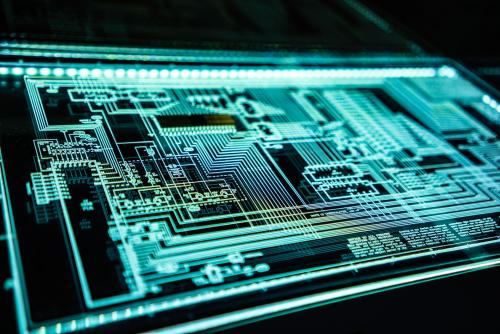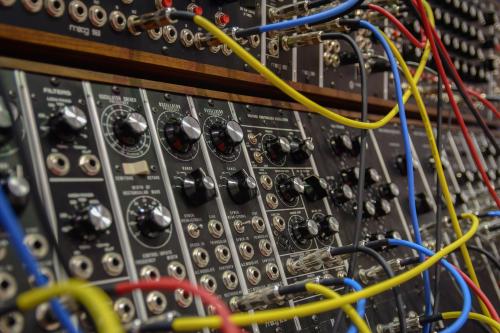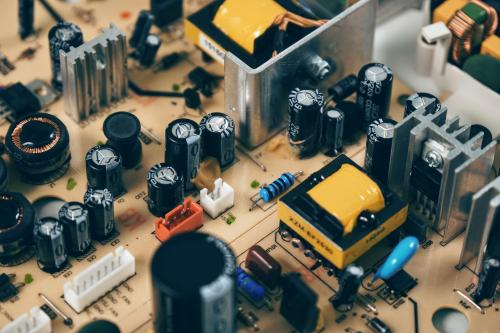Electrical Engineering Major/B.S.
Electrical systems and computers form the backbone of many of the structures central to contemporary life. Communication, medicine, education, space exploration, defense and other critical sectors of our society and economy depend on electrical engineers for their design, analysis and effective use. As an electrical engineering major, you will work closely with top-ranked faculty to gain an understanding of the fundamental knowledge and theories that underpin modern engineering. You will also put your learning into practice with innovative hands-on projects that will challenge and inspire you.
The program in electrical engineering is designed to provide students with a fundamental background in the basic theoretical concepts and technological principles that constitute the foundations of modern electrical engineering and, at the same time, the opportunity to emphasize subject areas in which they have a particular interest. The curriculum requirements are flexible enough to allow students to design their academic program to achieve a variety of objectives, with the assistance and approval of their faculty advisor. Students may emphasize the applied and experimental aspects of electrical engineering or may concentrate on subjects requiring analytical or theoretical treatment.
The electrical engineering curriculum prepares students for careers in electrical engineering or for graduate studies by providing a solid background in mathematics, physical sciences, and traditional electrical engineering subjects of physical electronics; electromagnetics; communications, control and signal processing; analog electronics and digital electronics.
Through the proper choice of flexible design, technical and unrestricted electives, it is possible to focus on any of these five specialty areas or to distribute the units of electives among these areas. Students who complete the electrical engineering curriculum will obtain a Bachelor of Science in Electrical Engineering, one of the engineering degrees recognized in all 50 states as eligible for registration as a Professional Engineer.
- Degree Checklist 2025-2026
- Degree Checklist for Transfer Students 2025-2026
- Double-Major Checklist 2025-2026
- ECE Course Prerequisites 2025-2026
Electrical Engineering B.S. Specialty Areas
- Physical Electronics

Physical Electronics area studies the physical phenomena basics of electronics and photonics, which is the foundation for the entire semiconductor industrial. It discusses the physics, manufacturing, characterization and applications of electronics and photonics devices and material. The electronic devices cover a wide range of semiconductor devices such as PN junctions, Schottky junctions, bipolar junction transistors, and field effect transistors. The photonic devices include solar cells, photodetectors, light-emitting diodes and semiconductor lasers. A broad range of material will be discussed such as semiconductors, dielectrics, metals, optical materials, organic semiconductors and magnetic materials. Applications of physical electronics are broad, such as integrated circuits (ICs), optoelectronics, and microelectromechanical systems. Students join the industry in IC manufacturing, telecommunications, high performance computing, renewable energy, bio-, agriculture and health science and beyond.
Recommended Schedule -- Physical Electronics and Photonics
Flowchart Schedule -- Physical Electronics and Photonics- Electromagnetics/RF/Microwaves/Wireless

Electromagnetics, incorporating radio-frequency (RF), microwave, and optical communications encompasses an enormous spectrum of science and technology. Originally the principal domain of radio communications (commonly called "wireless", again), electromagnetic theory forms the foundation of all electromagnetic wave propagation, communications, sensing and high-frequency circuit engineering. Thanks in part to high-speed semiconductor development and advances in integrated microcircuit techniques, wireless technology has found its way into almost all aspects of modern life. The list is endless and growing but consider the following areas where radio-frequency engineering expertise can be applied: In remote sensing of the environment (natural, industrial and agricultural) data are gathered and must be relayed via radio to data collection points. Similarly with studies of endangered and vanishing species. In the automotive industry autonomous vehicle operation will require car-to-car communication to improve transport efficiency and reduce collisions. Personal communications devices such as the now ubiquitous cell phone will continue to evolve with improved performance, smaller packaging and higher data rates. High-speed computing and telecommunications depend crucially on radio-frequency networks, especially at the very local level (laptop/PC to router) and increasingly for connecting remote societies which have not developed fiber-optic infrastructure. In fundamental science one finds RF-microwave-optical technology everywhere including radio-astronomy and astrophysics, deep-space telecommunications, plasma physics and fusion research, atomic timekeeping and metrology, studies of the fundamentals constants of the universe and even the search for dark matter. In medicine we find radio-frequency techniques at the heart of magnetic resonance imaging (MRI), remote patient monitoring and the emerging field of sensory deprivation augmentation. Moving up in frequency, the range from 1 terahertz (THZ) to the far infrared (FIR) has grown tremendously in the past few decades owing mostly to advances in long-wavelength lasers and nonlinear optics. In this range we have the ability to create systems capable of imaging owing to blackbody radiation produced by any warm substance. Moving further to the visible and near infrared (NIR) portions of the spectrum, optical fiber telecommunications is by far the most important technological revolution in communications since the advent of radio. Although the foundational performance limits due to fundamental physics have been attained, there are surprising and important advances that continue to appear, most noticeably the recent adaptation of silicon to optical devices.
Recommended Schedule -- Electromagnetics/RF/Microwaves/Wireless
Flowchart Schedule -- Electromagnetics/RF/Microwaves/Wireless- Digital Electronics

The field of digital electronics studies the concept of logic design, which is the basis of digital system design, and solidifies the creation of logic circuits through design, manufacture, experiment, and project execution. It deals with basic number systems and logic circuit elements (inverter, NAND, NOR gate, etc.) and how to construct and optimize combinatorial logic circuits. In addition, this area includes how to acquire the basic theories needed to design digital circuits and systems (hardware) and implement them using a specific class of computer software (firmware). It also discusses theories and techniques for software programming that construct microprocessor-based hardware to optimize for specific applications and operations.
There are many specialty areas in the field of digital electronics including: active/passive components; Data conversion circuits, Digital-to-Analog, Analog-to-Digital Converters; Microprocessors, Microcontrollers; Application-specific integrated circuit (ASIC), System-on-chip (SoC), Field-programmable gate arrays (FPGA), CMOS, hardware description language (HDL); Embedded system, Real-time operation system; and digital communications (UART, I2C, SPI, 2NFC, Bluetooth, etc).
Recommended Schedule -- Digital Electronics
Flowchart Schedule -- Digital Electronics- Communication/Control/Signal Processing

The Information System area studies all aspects of data, signals, and information, including how to collect, store, organize, model, search, and analyze data and signals, and how to improve the performance, robustness, and management of information systems. Specifically, signal processing focuses on methods and algorithm designs to process signals (audio, video, electromagnetic, biomedical, remote sensing, multimedia and others). Data science studies data processing and management in virtually every aspect of modern life (e.g., entertainment, communications, health, defense and finance). Communication and networking covers activities across all aspects of information systems that process and transmit information, and the underlying science and mathematics, and includes communications, networking & information theory, signal processing and inference. Students join the industry in telecommunications, wireless, social media, e-commerce, entertainment, health, defense and finance.
Recommended Schedule -- Communication/Control/Signal Processing
Flowchart Schedule -- Communication/Control/Signal Processing- Analog Electronics

There are two main types of signals in Electrical Engineering: Analog and Digital. Analog signals are continuously variable electric voltage, current, charge, etc. which represent information in physical world. Such physical parameters (e.g., sound, light, temperature, pressure, …) are converted to electric signals by sensors or transducers before they are processed by analog electronic circuits such as amplifiers and filters. Analog signals are prone to distortion by random disturbances or variations (i.e., noise) as well as nonlinearities in electronic devices such as diodes and transistors. In contrast, digital signals are binary signals which only take two distinct levels, known as binary “1” and binary “0” and are very robust to distortion and noise. That is why nowadays most of data processing, storage and communication take place in digital domain. However, despite the fast growth of digital signal processing which has become increasingly more powerful thanks to the integrated circuit (IC) technology, analog electronic circuits remain a critical and necessary part of most electronic systems. This is largely since analog signals generated by sensors and transducers need to be processed (e.g., amplified and/or filtered) before they can be converted to digital signals by Analog-to-Digital Converters (ADCs). Analog circuits are typically more challenging to design as compared to digital circuits and are mostly designed in a non-automated fashion by skilled analog circuit designers. In contrast, design of digital circuits and systems can be automated as the design phase consists largely of repeated identical tasks.
Recommended Schedule -- Analog Electronics
Flowchart Schedule -- Analog Electronics

